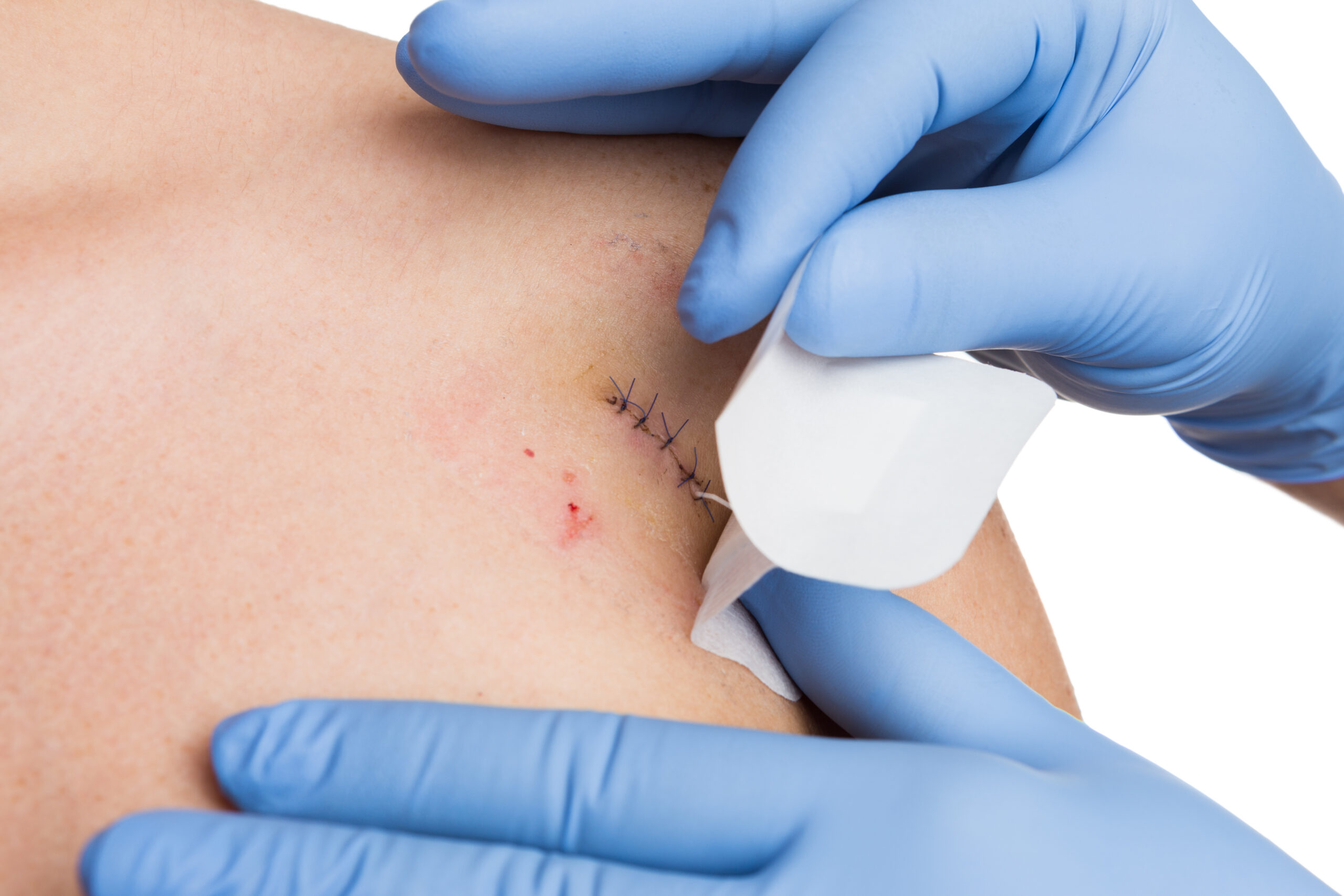Laceration Care
Laceration Overview
Cuts come in all different locations and sizes and have a wide array of approaches to treatment. The basic principles of any cut are to stop bleeding and prevent infection. For many cuts, this is possible without a trip to the urgent care. Often times, cleaning with soap and water followed by alcohol, antibiotic ointment, and an adhesive bandage is enough when the cut is shallow and bleeding is minimal.
What are the Treatment Options for Lacerations?

After a thorough history of the injury and physical exam of the wound, the wound will first be cleaned with soap and water, followed by betadine or alcohol. Occasionally, an x-ray is necessary to evaluate for foreign bodies or debris in the wound. After cleaning the wound, the clinician will decide on which is the best method for closing the wound. The different options for wound closure include:
- Skin glue: This is best for lacerations that are rather shallow and not long. The glue helps hold the skin together and creates a barrier over the wound.
- Steri-strips: For longer wounds on the arms or legs that are shallow and bleeding is minimal often times sutures can be avoided with the use of steri-strips.
- Staples: Although staples can be used in a variety of situations of lacerations they are most commonly used for lacerations in the scalp.
- Sutures: Sutures are the most versatile approach and can be used to close any wound needing closure.
What Steps Should be Taken After Wound Closure?
One of the most important aspects of wound management is preventing infection. Infection in a cut can delay healing significantly. It is important to clean the wound twice a day with soap and warm water and always monitor for signs of infection. Signs of infection can include:
- Redness around the wound
- Swelling around the cut
- Increased pain
- Warmth to the touch of the skin around the laceration
- Discharge of mucus from the laceration
- Fever
When Should You See a Doctor for a Laceration?
Often times, lacerations will require visiting an urgent care. Consider visiting one of our friendly clinicians for any of the following reasons:
- Cuts that appear to be deep
- Cuts in places where you want to reduce the appearance of a scar
- Cuts where bleeding won’t stop or is very difficult to stop
- Cuts where contamination is an issue (dirty water, cut by rusty metal, etc.)

To Make An Appointment
To Make An Appointment
or call (336) 565-5001
or call (336) 565-5001
OPEN: Mon-Fri, 8a-8p / Sat-Sun: 8a-5p
OPEN: Mon-Fri, 8a-8p / Sat-Sun: 8a-5p
